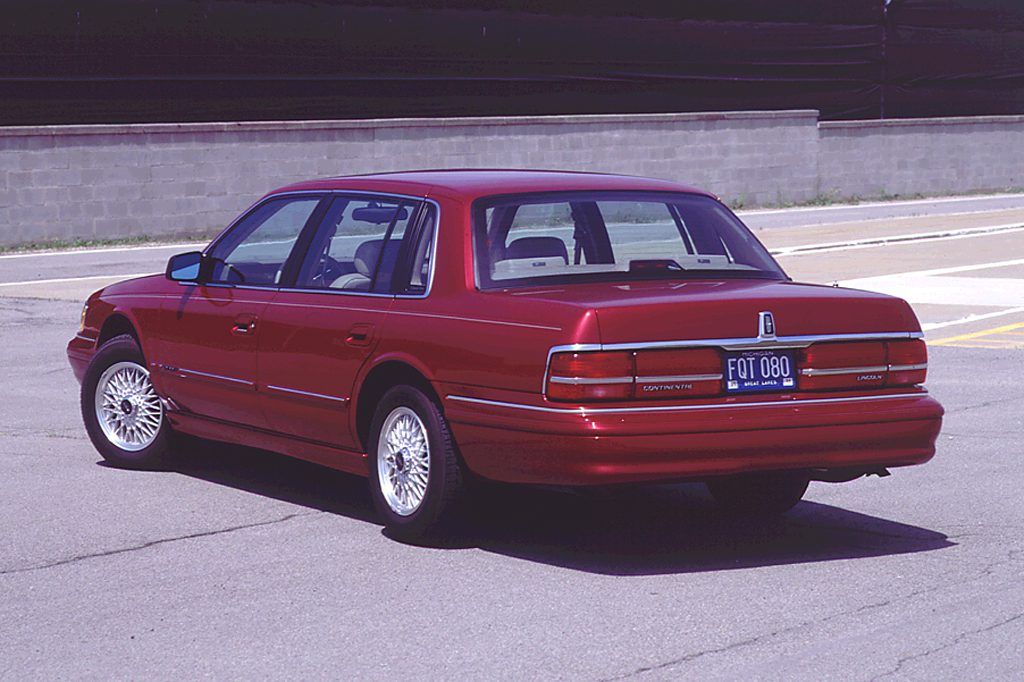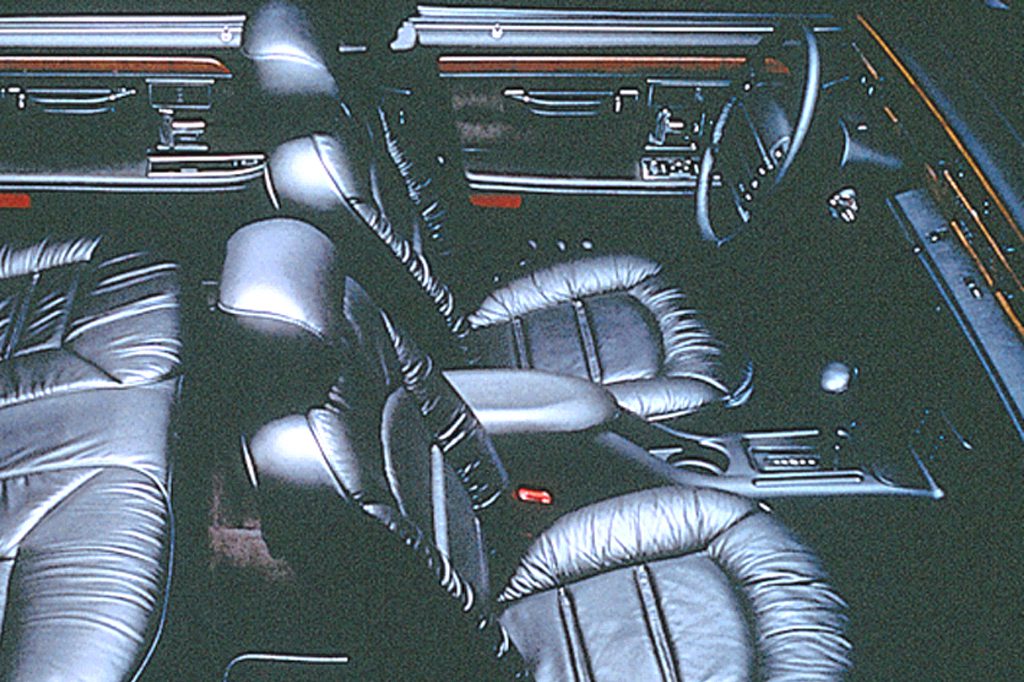| Premium midsize car; Built in USA |
|
|
| Good condition price range: $1,000 – $1,800* |

1994 Lincoln Continental

1990 Lincoln Continental

1994 Lincoln Continental

1994 Lincoln Continental interior

1993 Lincoln Continental interior
| Pros: |
|
| Cons: |
|
Even with its big-car looks, posh interior, limousine-style rear seat, and aerodynamic styling, the Continental lacks the performance needed to compete against other premium front-drive sedans.
Overview
When it came time to downsize and economize, Lincoln offered its customers their first taste of front-wheel drive and V6 power in 1988. The Continental coasted into the 1990 model year with only minor trim and equipment changes. The grille had bolder vertical bars and the hood wore a new ornament. The Continental came in both base and Signature Series trim levels, both powered by a 140-horsepower, 3.8-liter V6 mated to a 4-speed automatic transmission. Dual airbags were standard, as was a computer-controlled suspension, variable-assist power steering, and four-wheel antilock brakes.
Yearly Updates
| 1991 Continental Thanks to a new dual exhaust system and internal engine changes, Lincoln was able to boost power in the Continental from 140 to 155 horsepower at 4000 rpm. The standard 4-speed automatic also gains electronic controls. Among other changes, the base model now carries the name “Executive Series.” |
| 1992 Continental A standard passenger-side airbag and a power boost from 155 to 160 horsepower for the Continental’s 3.8-liter V6 are the two most significant changes for ’92. |
| 1993 Continental New optional buckets come with center armrest/storage console and cupholder in place of the previous 50/50 split bench seat. Also, there’s a new steering wheel as well as seatbelts, which gain height-adjustable anchors on each B-pillar. |
| 1994 Continental In the final year of its current design, Continental made an early appearance in May 1993, complete with a new grille, taillamps, and exterior moldings. Changes were also made to the suspension to improve ride control. |
